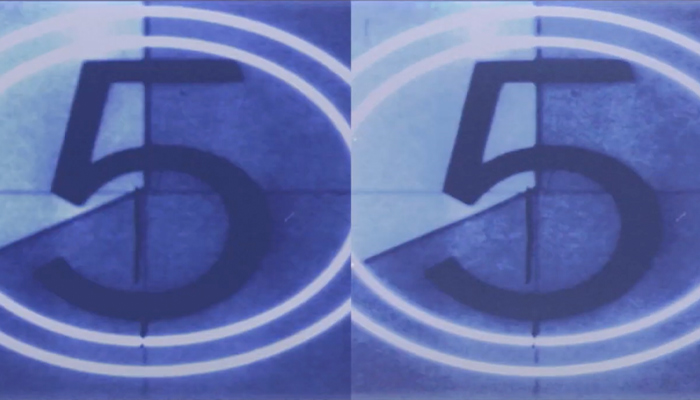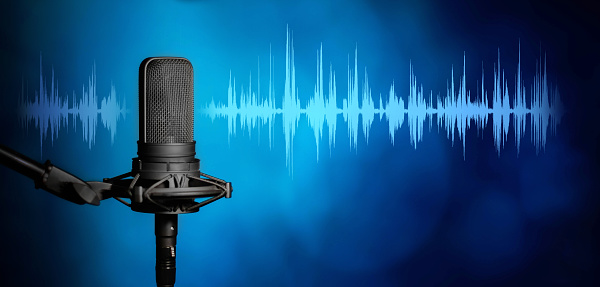
Whether you are recording video, audio, vocals, podcasts, or something entirely different, hiss is a problem that can rear its head again and again.
No matter how careful any budding producer, cameraman, or sound person is, there’s always a chance that hiss can inadvertently end up being recorded. Even in loud environments or noisy locations, hiss can still turn up as unwanted background noise getting in the way of great-sounding audio.
Hiss noise can be a real problem. Fortunately, there are many ways to deal with it.
What is Hiss?

Hiss is something you will be able to identify almost immediately when you hear it. It’s a sound that is most audible at high frequencies and is unwanted noise recorded alongside the audio recording you are trying to capture.
However, although the sound is most audible at high frequencies, it is actually recorded across the whole of the audio spectrum — this is referred to as broadband noise (because it’s noise across all of the audio band).
In terms of what you hear on your recording, it sounds like air being let out of a tire, or someone pronouncing a long “S”.
But whatever it sounds like, it’s something you want to avoid when recording audio. Few things undermine the quality of a recording more than unwanted hiss.
The Nature of Hiss, and Why Is There a Hiss in My Audio?

Hiss can come from a variety of sources, but the most common is from an external microphone, interfaces, vinyl records, video cameras, air conditioning or indeed anything with electronics inside it.
The electronic components themselves are where hiss comes from and is called self-noise. It is inevitable — the result of the heat energy created by moving electrons. All audio circuits generate some level of self-noise. The noise floor is the level of a circuit’s inherent noise, expressed in decibels (dB).
The amount of hiss that electronic components generate is dependent on the screening and the quality of the actual components themselves. Cheap or poorly made equipment will generate far more hiss than expensive, well-manufactured gear that has been properly screened.
No equipment produces zero self-noise. As a rule of thumb, the more expensive the hardware you invest in, the less self-noise will be generated. And the less background noise you have to deal with, the less noise reduction needs to be applied to your audio tracks.
Poor-quality audio cables can also contribute to hum and hiss being picked up when you record. Cables are usually screened to help cut down on this, but screening can crack or become less effective in older cables, or jacks can become damaged. Further, cheaper cables will inevitably have less good screening than more expensive ones.
All this can contribute to his on your recorded audio.
Steps to Remove Hiss From Your Audio
Fortunately, there are plenty of ways you can reduce noise and remove hiss from your audio.
-
Noise Gates

Noise Gates are a simple tool that almost all DAWs (digital audio workstations) have.
A noise gate is a tool that allows you to set a threshold for sound. Anything which is below that sound is automatically cut out.
Using a noise gate works well for hissing sounds, and can also be effective at removing other unwanted noises. By adjusting the threshold of the noise gate you can adjust how much sound is let through. It is particularly handy to use during sections where there is no sound at all.
So, for example, if you have two podcast hosts and one is silent when the other is talking, using a noise gate to remove any hiss sound would work well.
Using a noise gate is simple and generally only requires adjusting a slider to set the volume threshold, though more involved ones are available. This makes it an ideal technique for beginners to get to grips with.
-
Plug-ins
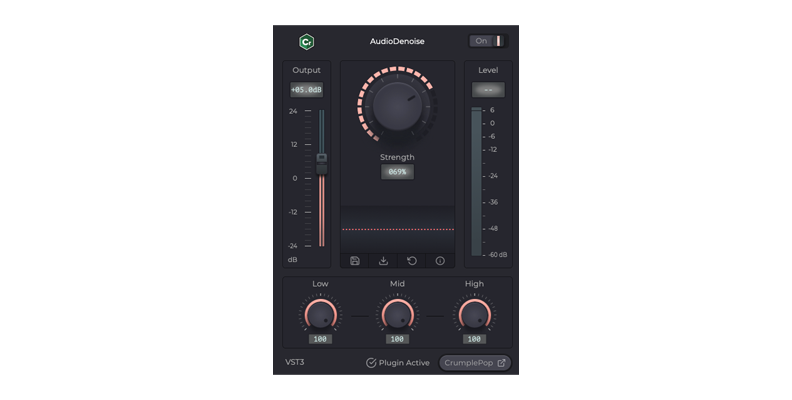
Plug-ins come in many different varieties. CrumplePop’s AudioDenoise plug-in works with Premiere Pro, Final Cut Pro, Logic Pro, GarageBand, and other DAWs and provides studio-quality denoising.
This works exceptionally well on hissing noise, of course, as well as being extremely effective on other sounds. Fridges, air conditioners, and many other hissing sounds simply disappear from the audio file, and you are left with a clear, clean-sounding end result.
The software itself is simple to use in two steps: adjust the strength of the denoise, and then check your audio. If you are happy with the results, that’s it! If not, simply adjust the strength to reduce noise and check again.
However, there are plenty of other plug-ins on the market. Some of them are bundled with DAWs and video editors like Adobe Premiere Pro, others will need to be downloaded and installed.
There are audio plug-ins for all DAWs and all budgets. All you need to do is choose one!
-
Noise Reduction and Removal
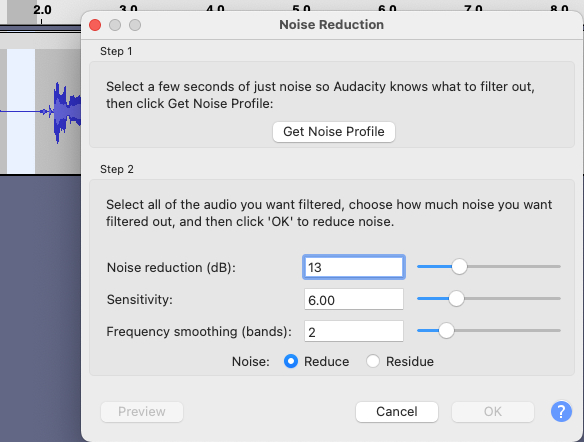
Many DAWs come with noise removal as part of their feature set to eliminate background noise. These can be high-end professional pieces of software like Adobe Audition and Adobe Premiere Pro or free like Audacity. Audacity actually has a very effective noise removal effect.
What the Noise Removal tool does is take a part of the audio that contains the hiss, analyze it to get the noise profile, and then remove the unwanted sound from either the entire recording or a section of it.
The first step is to highlight a part of the audio file that has the unwanted hiss noise on it. Ideally, this should be just the hiss, a part of the audio track without too much noise or where there is no other sound featured other than what you want to remove. When a podcast host has stopped speaking or when a singer is in-between lines would be ideal.
This is then analyzed by the software so it can identify the sounds which need noise reduction. You can then apply this to the track as necessary to reduce hiss level.
Audacity also allows you to adjust different settings, such as the sensitivity and amount of noise reduction, so you can always tweak the settings until you are happy with the overall quality. You can use Audacity to eliminate noise, then return to Adobe Premiere Pro to edit your video.
Hear It For Yourself
Advanced audio AI removes noise and boosts your vocal quality.
Toggle it on/off to hear the difference.
Remove Wind
Remove Noise
Remove Pops & Plosives
Level Audio
Remove Rustle
Remove Echo
Remove Wind
Tips and Tricks
There are lots of good ways to deal with hiss.
-
Don’t Have Hiss To Begin With
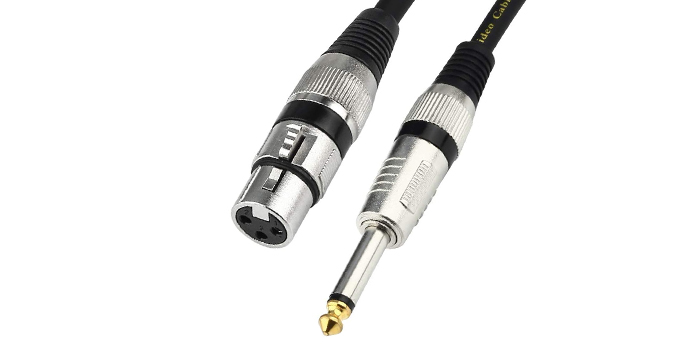
It sounds obvious, but the fewer noise sources of hiss you have on the recording, the less hissing sound you will need to deal with when it comes to hiss reduction in post-production. This means checking that you have good-quality audio cables, good equipment to capture your sound, and ensuring that you are as isolated as possible from any other stray sounds that your microphone might pick up.
It’s better to eliminate hiss before it occurs rather than trying to fix it with noise reduction after the fact!
-
Remove Unwanted Background Noise - Room Tone

Record some background noise before you start recording your actual audio. Don’t speak or do anything else - just record the ambient sound.
This is known as getting the room tone. Your microphone will pick up any hiss, and you will be able to easily identify it without any other sounds getting in the way.
This means you can either take manual action to eliminate anything causing hiss, such as turning off any unnecessary equipment that might be generating hiss, checking your leads and connections, etc.
Or if you are going to use a Noise Removal tool in your DAW as the one iZotope offers, it gives the software a nice, clean recording to be analyzed to reduce background noise with a satisfactory result.
-
Balance Your Audio Track Sound and Equipment

When you record audio, you want to ensure the audio is recorded cleanly and with a good, strong signal. However, turning the gain on your microphone up high will not only mean a high volume for your recording, but it will also amplify any hissing sound present, making removing hiss harder.
To address this, you need to experiment a little. Turn the gain down to a level that allows the capturing of a good audio signal but which keeps the higher frequencies with hiss as low as possible or place the microphone closer to the source.
There’s no one correct setting for this, as every set-up is different depending on the equipment being used. However, it is worth spending the time to get this balance right as it can make a big difference as to the considerable amount of hiss which gets captured.
-
Take Time to Get Your Environment Right

Many recording spaces seem great to begin with, but when you listen back, you start to notice all sorts of hiss and background noise. It’s worth taking the time to ensure that your recording environment is set up in the best way possible.
If it’s possible to invest in soundproofing this can make a big difference — sometimes hiss can be generated by equipment that isn’t even in the room, and even simple soundproofing can dramatically cut down the amount of hiss that gets captured.
When you are recording, it’s also a good idea to ensure the distance between the person you are recording and the microphone is correct. The closer your subject is to the microphone, the stronger the recorded signal is going to be. That means less hiss will be audible, so less hissing noise removal needs to be applied to your audio files.
This is also true for any other background noises which might potentially be captured, too.
As a rule, you want to keep the subject you are recording as close to the microphone as possible, but not so close that they cause plosives on the recording. As with a lot of these techniques, this will take a little practice to get right, depending on both your host and your recording equipment. But it will be time well spent, and the results will be worth it.
Conclusion

Hiss is an annoying problem. Generally speaking, unwanted sounds are something that everyone struggles with, from the most amateur podcast producer to the most expensive professional recording studio. Even the best environments can suffer from it.
However, with a little time, patience, and knowledge, hiss can become a thing of the past, and you will be left with pristine, clean audio.







